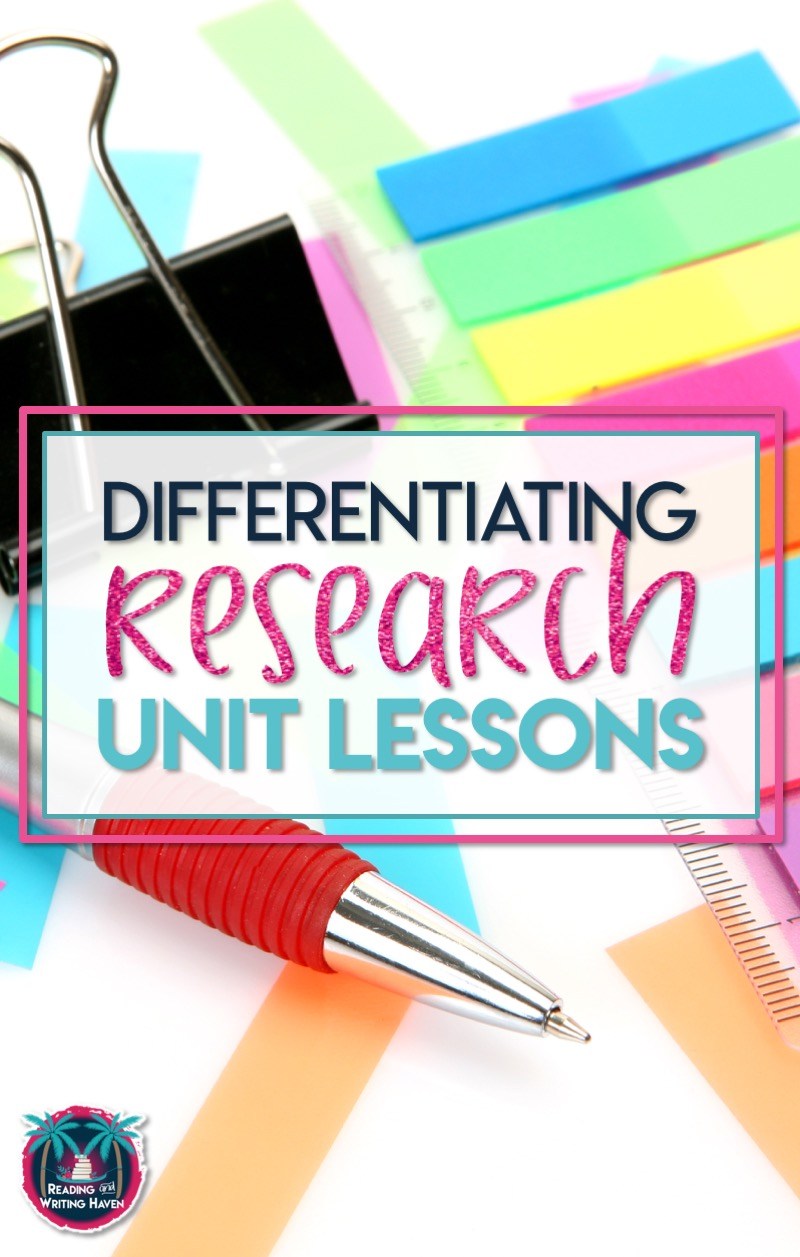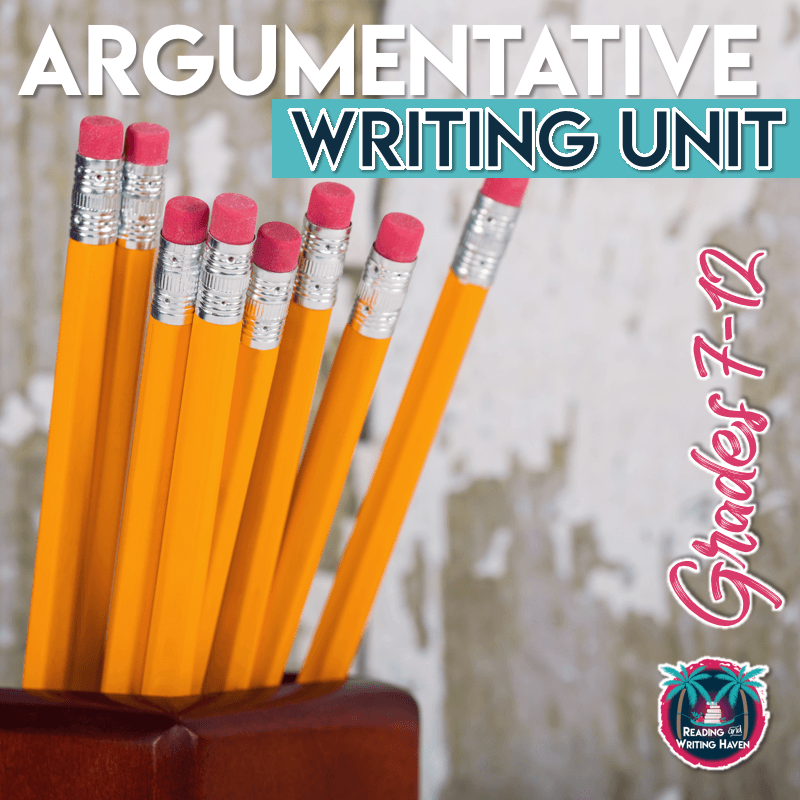6 Ways to Differentiate Research Paper Lessons
Teaching writing effectively includes research. And, how we differentiate research lessons matters. If you’re not sure how to teach the same concepts and skills to learners with diverse abilities and readiness levels, keep reading!
If there’s one thing that is true about teaching writing, it’s that we can pretty much guarantee our students will all come to us with different experiences, strengths, and weaknesses. It’s one of the biggest reasons why teaching students to write research papers is hard. Differentiation can help. There are hundreds of ways we can adjust instruction to meet students where they are. In this post, I’m sharing a handful of my favorite ways to differentiate research paper lessons.
POWERFUL WAYS TO DIFFERENTIATE RESEARCH
Provide Topic Choice
It may seem small, but allowing students to choose their own topic is actually extremely powerful. When students are passionate about their research assignment, they are more likely to put energy and pride into their work. We want them to have a sense of curiosity and optimism about the topic, and it’s difficult to achieve that when we are assigning them a specific prompt. Scaffolding and differentiating topic selection for students is necessary. This is one way you can do that.
Learning at Different Paces
To me, stations and workshop are very similar. The main difference is that stations are something that can be embedded within a workshop framework. The goal of both of these approaches is to give students the opportunity to learn at their own pace through a variety of tasks. During this time, teachers can work one-on-one or in small groups.
Some topics, like embedding quotations, are great for this structure. I introduce the concept to the class. We practice together and study models. Then, students complete small group activities that encourage them to think about embedding quotations from different angles.
Stations and workshops are also excellent avenues to discuss other writing skills, like the concept of framing the essay, comma usage, or using transitional sentences between ideas.
Finding Time for Small Group and 1:1 Conferences
One of the best ways I’ve found to make more time during class to confer with students (which is the most beneficial form of differentiation you will find!) is flipping my lessons. Research skills can be heavy and take a lot of time to teach. When I move most of the lecture outside of class, it frees up time to practice in class.
For instance, let’s say you want students to understand how to cite research without plagiarizing. Create (or curate) a video or series of videos that teaches this concept. Have students watch one for homework. The next day, you can start with analyzing an example and guided practice. Follow that with independent work as you meet with small groups to touch on areas of need.
Annotating Research Sources
All students need to annotate their sources, but asking them to do so can also be a form of differentiation. Some students don’t understand the importance of ethical research. They don’t see the need to read the entire source, to cite the source correctly, or to keep in mind the overall viewpoint of the author. Instead, students sometimes skew the research so that it works in favor of their own argument.
When students annotate the source, they are considering the whole piece. To differentiate, work with these students in a small group using a common article. Selecting a topic that is relevant to them, like video games, can help. Have them label the main point and evidence. Ask them to identify any counterarguments and rebuttals.
Then, make a claim that goes entirely against what the source says, but use a random line to support your argument. Usually, students will be able to identify your mistake, especially if you argue the opposite of the position they would take.
Scaffolding the Process
Many young writers benefit from color-coding example essays and paragraphs. This visual form of differentiation (putting a color to each paragraph component) makes writing a little less scary for students who struggle. For example, in the introduction, make the hook one color, the background a second, and the thesis a third. After students write their own introduction paragraph, ask them to color code it as well. Have they included all of the necessary components? You can use this color-coded graphic organizer to help them with their pre-writing.
When students write informative essays (which can get a tad boring), I like to spice things up with visuals! Students write an academic photo essay. The graphic multimedia elements and range of topic choices are engaging. I scaffold the writing process by providing flipped videos, graphic organizers, and scaffolded slides. If students prove they don’t need that structure, they have the freedom to stray from it.
Gamifying Writing
When trying to differentiate research paper lessons, we have to keep in mind that students work at different paces. Some middle and high school students might need to revise their introduction paragraphs several times before they are ready to move on. Stronger writers may only need to make a few quick edits. Either way, the greatest amount of learning and growth happens during revisions.
Gamifying a research paper unit can be an interesting differentiation approach. Try requiring that students complete Level One (the introduction paragraph) before moving on to Level 2 (the first body paragraph). This approach is helpful because it allows you to give the student feedback on each component before they finish the essay.
In all of my time teaching students to write, the number one frustration factor I see from reluctant writers is realizing they didn’t have a sound skeleton to their ideas. Students value feedback. They ask for it constantly. If we can provide them with that feedback on a regular basis, the opportunity for them to grow increases because we are meeting them where they are.
You can offer students incentives to complete each level, or you could just choose to make each level a required assignment. Some Learning Management Systems, like Schoology, offer custom badge options and completion rules that help teachers to create a gamified environment online.
And those possibilities are just a drop in the hat. Teaching writing is a complex form of art. What are your favorite ways to differentiate research lessons? Tell us in the comments. Want more ideas? Lauralee from Language Arts Classroom wrote about three ways she handles research paper instruction.
READ NEXT:
SCAFFOLDING THE MULTIPLE PARAGRAPH ESSAY
AVOIDING PLAGIARISM: TEACHING TIPS AND LESSON PLANS
14 WAYS TO SUPPORT STRUGGLING WRITERS
TIPS FOR TEACHING CONCLUSION PARAGRAPHS
RELATED RESOURCE:
Need a scaffolded, all-encompassing argumentative writing unit? Each skill is broken down, and multiple examples are provided so that you can analyze them with students. This argumentative writing bundle is complete with activities that you can use to meet students wherever they are in their writing journey.

